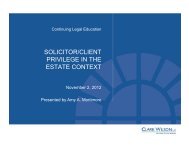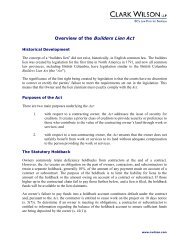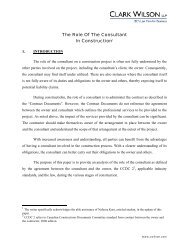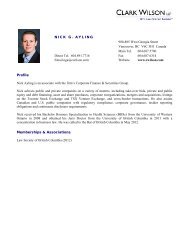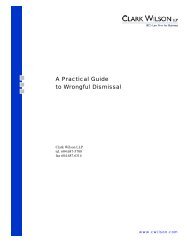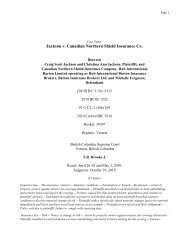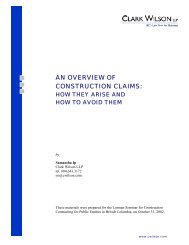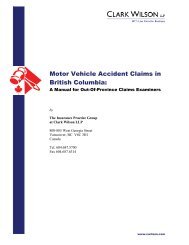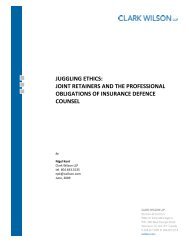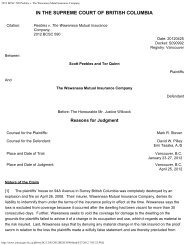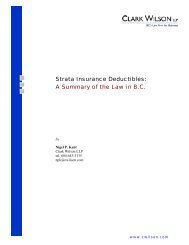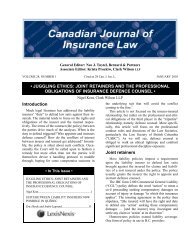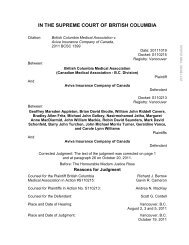Create successful ePaper yourself
Turn your PDF publications into a flip-book with our unique Google optimized e-Paper software.
Kruger Products Limited v. First Choice Logistics Inc. Page 10<br />
exhaust system and the burning paper is sufficient to allow me to come to the<br />
conclusion that the Fire was caused when paper came into contact with the<br />
unwrapped exhaust of the Forklift.<br />
An inspection of the Forklift following the Fire disclosed no evidence of fire<br />
within the Forklift. I find this to be further evidence that the Fire was caused<br />
by paper coming into contact with an external part of the Forklift. I find that<br />
the unprotected exhaust of the Forklift came into contact with paper debris,<br />
either in the location where Mr. Bodnar had deposited a parent roll or in the<br />
aisle as he moved the Forklift back to that part of the Warehouse where he<br />
was to pick up another parent roll. I find that the heat of the unprotected<br />
exhaust of the Forklift caused the paper which was in the aisle or which had<br />
been blown into the aisle from debris at the foot of a stack of parent rolls to<br />
ignite, the ignited paper landed at the base of a stack of parent rolls, the<br />
paper transferred the flame to the parent rolls, and the fire spread from there<br />
[At paras. 51-2; emphasis added.].<br />
2013 BCCA 3 (CanLII)<br />
The Court did not make any finding of gross negligence on the part of the<br />
defendants.<br />
[20] Beginning at para. 53, the Court also considered whether there were other<br />
possible causes of the fire. Most notably, FCL had adduced into evidence a report<br />
prepared by a professional engineer, Mr. West, of Baker Materials Engineering, who<br />
was instructed to assume inter alia that an examination of the Forklift did not reveal<br />
any possible source of ignition other than one “associated with the exhaust system.”<br />
He carried out certain tests on the overflow tube from the radiator reservoir of the<br />
Forklift. The tube was found charred and partly melted “where it passed adjacent to<br />
the exhaust pipe on the left side of the [Forklift].” The tests indicated that the<br />
temperature of the exhaust pipe in the Forklift during operation was “certainly<br />
sufficient to ignite paper” and that a molten or charred piece of the overflow tube<br />
could also have achieved temperatures sufficient to ignite paper. Mr. West<br />
concluded:<br />
We also understand that the fire started at approximately 10:30 a.m. and that<br />
forklift 1478 had operated as a replacement for FCL’s own unit for a period of<br />
four or five days before the fire occurred. The extended period of operation<br />
of the forklift before the fire indicates that either the overflow tube fell into<br />
contact with the exhaust pipe very shortly before the fire occurred, or the<br />
contact was intermittent over the time that the forklift was used before the fire.<br />
Our tests showed that the tube melted and charred within minutes of contact<br />
with a hot exhaust pipe.<br />
If the contact had been intermittent, this could then present an opportunity for<br />
fragments of toilet paper product to attach to the melted portion of the tube



